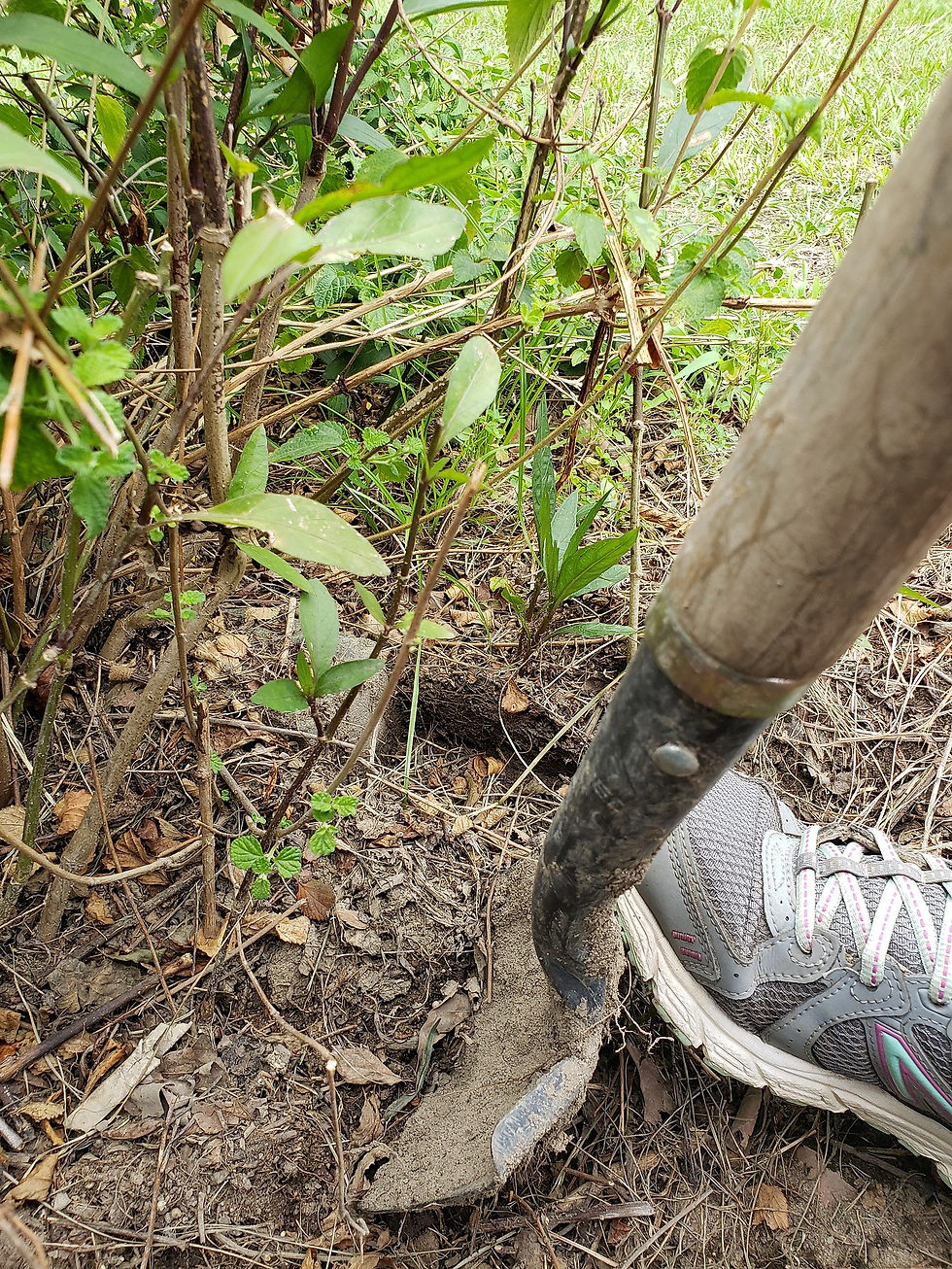A Singular Flower Bed
- Jun 21, 2019
- 3 min read
The shovel sinks into soft earth and two and a half days’ rain collapses in around it making the noise that always comes to mind when I read the words “sucking chest wound.” I wiggle the shovel back and forth, pull it out, and repeat the motion until I’ve created a circle around the alder tree that has had the audacity to plant itself in my flower bed.

I have one flower bed. Only one. My singular effort to manifest Grandmama’s green thumb. It is L-shaped and borders two sides of the deck that looks out over the branch through which, in the winter, I can see water. One leg of the L is planted in lilies and irises, now overrunning themselves and the cement edgers that I installed to contain them and the mulch that once-upon-a-time I actually kept in place. The other leg I spent years planting in perennials that grow in unruly clouds – verbena and lantana, salvia and Mexican petunias, coreopsis and creeping jenny. My favorite, though, is Russian sage.
Russian sage grows tall and slender, its color a muted gray-lavender. It leans into the breeze, drapes itself over all the other plants with a kind of noblesse oblige. And the scent, oh, the scent is a fragrant greenness both sweet and spicy. It is hearty and independent and tolerant of the benign neglect that is the hallmark of my gardening philosophy. I express my gratitude by sighing extravagantly as I clip its blooms and drop them nonchalantly into pitchers and antique vases.
And now an alder tree seedling, along with a thorny weave of sticker bushes that stretch up and into the deck railings like the castle hedge meant to keep out the handsome prince and a tangle of vines that has enveloped the shepherd’s hook on which the hummingbird feeder hangs and looks as though it has every intention of finding its way up through the summer sky to the giant’s house, is threatening to overtake my singular flower bed.
For 30 minutes I dig. And dig and dig. Alder trees, apparently, have an elaborate root system and the rain-softened dirt is not the ally I assumed it would be. Another 30 minutes and a pull that nearly lands me inside the wheelbarrow results in the expulsion of the alder tree. And also results in the discovery that its failure to respond to my repeated jerks and yanks and snatches was, at least in part, due to the fact that its roots had been engulfed by those of something else.
Wrapped around and around the roots of the alder, like a new color of yarn added to an wound ball, are the roots of Russian sage.
I don’t know how long I stood there, leaning on my shovel, staring at the discovery. An archaeologist uncovering an Egyptian artifact in a Kansas cornfield could have been no more surprised. My Russian sage, my favorite, has embraced my nemesis, has wrapped its skinny, but surprisingly strong arms around the thing that threatens the entire flower bed. There is only one thing to do. It, too, must go.
And so I keep digging. The tears that tremble in tiny pools awaiting the blink that will send them falling are not just the result of the sweat that has run down my forehead and into my eyes. They are the memories of every other time I have had to dig up Russian sage, every other time I’ve had to let go.
But not just let go, which feels like passivity dressed in fatigue, but actively wrench from my heart the roots of a habit, a relationship, an emotion that no longer served, that had grown from a lovely to look at, sweet-smelling flower to a noxious weed.
I wipe my eyes with the back of a dirty hand and plunge the shovel back into the damp, black dirt. I will not finish in one day, but I will finish. This is my one flower bed. And I am going to take it back.
Copyright 2019








Comments